articles
When Did We First Celebrate Makar Sankranti?
Published
9 years agoon
By
ihar
Author: Dr. Raj Vedam
Press Release: https://swarajyamag.com/science/when-did-we-first-celebrate-makar-sankranti
SNAPSHOT
If Makar Sankranti indeed celebrates the Winter Solstice, how far back in time did we develop the knowledge to understand the significance of the event? Here, Dr Raj Vedam uses knowledge from astronomy, scriptures, paleobotany and other disciplines to arrive at an answer.
The widespread celebration of the Makar Sankranti festival and its many regional variations hint at great antiquity. In this article, we will take a journey through time, weaving together history, astronomy, calendars, seasons, agriculture and common customs, to find connections and understand the antiquity of the festival, and as an outcome, we will examine three different synchronisms for Makar Sankranti.
We first discuss points of astronomical significance, to appreciate the antiquity of the festival.
1. As the Earth rotates on its 23.5 degree tilted axis from west to east, it would appear that celestial bodies that rise in the eastern horizon set in the western horizon, except for the stars closer to the celestial North (South) Pole that would appear to circle it.
2. Earth’s annual revolution around the Sun while tilted at 23.5 degrees gives the phenomenon of seasons, due to the changing amounts of sunlight in each hemisphere, in each quarter segment of the revolution.
3. The visible stars are so distant from our solar system that they appear to be fixed with respect to the Earth’s revolution. As the Earth makes progress in its revolution each day, it would appear that the familiar constellations also change in the sky. Thus the constellations that appear in the night sky in a given month will repeat in a year’s time (ignoring the slow effect of precession, discussed in point 7). The situation is analogous to looking outside a train window on a circular track – the same scenery will appear at the same point on the circular track.
4. Due to the Earth’s tilt at 23.5 degrees, from an Earth-bound observation point, it would appear that the sunrise is offset by a small amount daily, and reaches a southernmost point – the Winter Solstice, and reverses course, and reaches a northernmost point, the Summer Solstice. Ancient Indians recognized the six-month southern journey of the Sun as Dakshinayana, and the 6-month northern journey as the auspicious Uttarayana. The epic Mahabharata, recounts Bhishma who could control the time of his death, and lay on a bed of arrows, waiting for the start of Uttarayana, for more than 92 days (Nilesh Nilakanth Oak, When Did the Mahabharata War Happen?), hinting ancient observance of the Winter solstice occurrence.
5. Indian astronomical work divided the sky into twenty-seven Nakshatras that each occupies 13 and 1/3 degree segments, approximately the distance traveled by the Moon in a 24 hour period against the fixed stars. Each Nakshatra was identified by the principal stars in that segment of the sky. The Nakshatra model forms part of the earliest corpus of Indian works on astronomy, dating to the Vedic era.
6. In addition to the twenty-seven Nakshatras, ancient Indians also divided the sky into 12 equal parts of thirty degrees each, called the Rashis. While there have been some Western assertions that ancient Indians borrowed the Rashi model from Babylon, Subhash Kak shows otherwise in his book, Astronomical Code of the Rgveda, about the Vedic origin of the Rashis, evolving from the twelve Adityas. See fig.1.

7. Due to the gravitational effects of Sun and Moon (and to a lesser extent, Venus, Jupiter and Saturn), the Earth wobbles on its axis, and completes a non-uniform cycle in about 25,771 years, referred to as Precession of Equinox. Due to this wobble, the celestial North Pole (and South Pole) appears to change over time, and the Rashis appear to drift slowly over the years. More than 2500 years ago, ancient Indians had observed and measured the wobble at a degree for every 100 years. This translates to a measure of 36,000 years, a figure repeated by Hipparchus around 150 BCE. One of the best estimates of Precession was made by Bhaskara II of Ujjain in the 12th century, to 25,461 years, and not improved upon till modern times. It is very interesting that ancient Indians had noted a time when Abhijit (the star Vega) was once the pole-star, and also a time when it was no longer the pole-star. Abhijit was at the Celestial North Pole approximately 14,000 years ago. Around 7000 years ago, it would have appeared to have “fallen” in the sky, as noted by Dr. P.V.Vartak (in Scientific Dating of Ramayana and the Vedas), calling out a reference to a passage in the Mahabharata.
We now define Makar Sankranti as the date when from an Earth-bound observation point, the Sun enters the Makar Rashi, also called Capricorn.
Ancient Indians noted the Winter Solstice as the start of the auspicious Uttarayana. At some point in the past, Uttarayana coincided with Makar Sankranti, and constitutes our first point of synchrony. We can determine the time period when the two coincided by considering the effects of Precession. Prior to that, it is instructive to note how ancient Indians and Europeans recorded the passage of time.
Subhash Kak notes that even before Vedanga Jyotish, ancient Indians’ 27-Nakshatra and 12 Rashi system used a luni-solar calendar where every 5 years, an additional month called Adhika Masa was added, synchronizing the lunar and solar years. Ancient Indians also estimated the tropical year, defined as the period when the Sun enters the same seasonal point – say, a solstice point.
Aryabhata and Bhaskara II had estimated the tropical year at 365 days, 6 hours, 12 minutes, and 30 seconds, the same figure as estimated in the ancient Indian text, Surya Siddhanta. The modern figure for the tropical year is approximately 365 days, 5 hours, 48 minutes and 45 seconds.
In the Western system, Julius Caesar instituted the Julian calendar in 46 BCE, dividing the year of 365 days to 12 months, and adding a day every 4th year, thus averaging to 365 days, 6 hours – a figure less accurate than the Surya Siddhanta. Due to this approximation, this calendar accumulated errors over the years, causing a “slip” in the dates of the equinoxes and solstices. The modern Gregorian calendar introduced in 1582, introduced a correction, where if a year is integer-divisible by 4, it is considered a leap year, except for those centurial years that are integer-divisible by 100, and with further overruling exception to those centurial years that are integer-divisible by 400, which were considered as leap years. With the modern Gregorian calendar, the equinoxes and solstices occur on approximately the same date each year, and considering Precession, has an error of about 1 day every 7700 years.
Considering the first synchrony, the Winter solstice today coincides with the Dhanus Sankranti – one Rashi away from Makar. This slip has happened due to the Precession noted earlier.

Assuming a uniform Precession rate of 25,771 years for a full circle of 360 degrees, each degree is about 71.5861 years. Rounding the figures and noting that each Rashi occupies 30 degrees, we multiply 72 by 30 to get 2160 – the approximate number of years in the past, when due to Precession, Makar Sankranti would have coincided with the Winter Solstice, approximately in 143 BCE. By simulation in planetarium software, we find that anywhere from 400 BCE to the opening centuries of the Common Era, the Winter solstice date would have coincided with the Sun rising approximately in Makar Rashi. Based on synchrony of the solstice with Makar Sankranti, we propose the festival to have been celebrated since 400 BCE. See figs. 3 and 4.


Our second dating of the antiquity of the Makar Sankranti festival is by considering the synchrony of Makar Sankranti with the Til/Sesame/Gingelly crop harvest. We notice an India-wide common aspect of celebrating Makar Sankranti – the widespread use of til in traditional sweet preparation. Til is a drought-resistant rabi crop in India, planted currently around mid-November and harvested in April, before the monsoons, taking about 90 to 120 days to grow. Paleo-botanical records suggest an antiquity of at least 3000 BCE for the multi-crop cultivation of til in Rakhigarhi sites and a few centuries later for domestic rice, and trade with Mesopotamia and Egypt in til in 2000 BCE. Up to the medieval period, Indian farmers encoded agricultural wisdom with references to nakshatras to help time their planting and reaping activities. It is fascinating to investigate a period of time when Makar Sankranti coincided with the harvest of the til crop, say in southern India, and was therefore used in celebratory sweet preparation.
Contrary to popular thought, the seasons do not change with Precession. The Milankovitch cycles predict long-term climate changes due to Precession, Obliquity and Tilt cycles of the Earth, but these do not impact the periodical seasons (might make seasons more or less severe, though!). However, if we peg our measurement of time to a Nakshatra/Rashi, that observation can change over time due to Precession. Thus an observation that “rainy season starts in Ashada Masa” can change over time due to Precession.
Our clue is that traditionally, Makar Sankranti is considered as a harvest festival. In Tamil Nadu, there are two planting seasons for Til – Thai Pattam (Jan/Feb) and Adi Pattam (July/August). Considering a 4-month growing period, the Adi Pattam crop harvest would coincide with December. Thus again, the date of about 400 BCE synchronizing the Winter solstice, Til harvest, and Makar Sankranti makes sense.
The final synchrony we examine is to ask the question, when did Makar Sankranti last coincide with Jan 13th/14th? By direct simulation on planetarium software, we find this date to be around 1500s CE. This period is startlingly, the exact period of the famous Kerala astronomer, Nilakantha Somayaji (1444-1544), author of Tantrasangrama, who would have been aware of the length of the tropical year and the effect of Precession from works of Aryabhata, Bhaskara II as well as Surya Siddhanta, and might have computed the date accordingly. This date was probably left untouched since. See figure 4.
We have examined three synchronies regarding Makar Sankranti. The first, based on synchrony with the Winter Solstice gives a date of about 400 BCE. The second, based on a synchrony of til harvest in Tamil Nadu with Makar Sankranti also suggests 400 BCE. The third, based on a synchrony with the tropical calendar, gives a date of 1500s CE.
As we celebrate Makar Sankranti, we should also celebrate the strong traditions of astronomy and mathematics, indelibly tied with the shared experience of the nation, over thousands of years.
You may like
articles
Team IHAR at the AMI Festival held in the Indian Museum, Kolkata
Published
2 weeks agoon
December 9, 2025By
Suprabho Roy
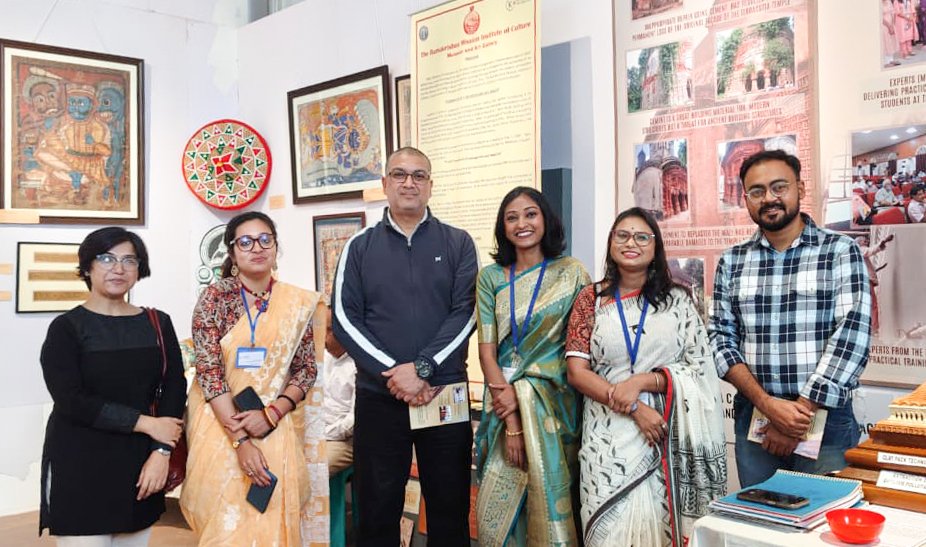
The AMI Festival at the Indian Museum, Kolkata beautifully brings rural India into the heart of the city. Walking through the exhibition feels like stepping into a living archive of village life — from terracotta traditions and folk paintings to everyday tools, stories, and songs that have shaped generations.
Curated with warmth and sincerity, the festival creates a shared space where artisans, researchers, museum professionals, and visitors connect deeply with India’s rural heritage. Here, heritage isn’t just displayed — it is felt, heard, and celebrated.
Every object carries a community’s memory, every performance echoes the rhythm of village life, and every exchange bridges the distance between our rural roots and the urban world.
This year, IHAR proudly participated with three representatives.
Our member Mouli Roy collaborated from Devalgarh Museum, while Nabanita Ghoshal and Ronita Mondal represented Team REACH Foundation, Kolkata, engaging with visitors on the urgent need to conserve historic buildings and safeguard cultural heritage.
Adding to this spirit of collaboration, IHAR Director-Operations Sri Surya Sarathi Roy and IHAR Digital Media Incharge Suprabho Roy, accompanied by Suchira Nandi Purkayastha, Journalist, The Times of India, visited the ongoing festival and warmly appreciated the dedicated efforts of our fellow members.
Our presence reinforced a collective message: heritage survives only when communities, institutions, and individuals work together to protect it.
AMI is a powerful reminder that heritage is not a relic of the past —
it is a living, breathing legacy shaped by people, preserved with care, and enriched when shared.
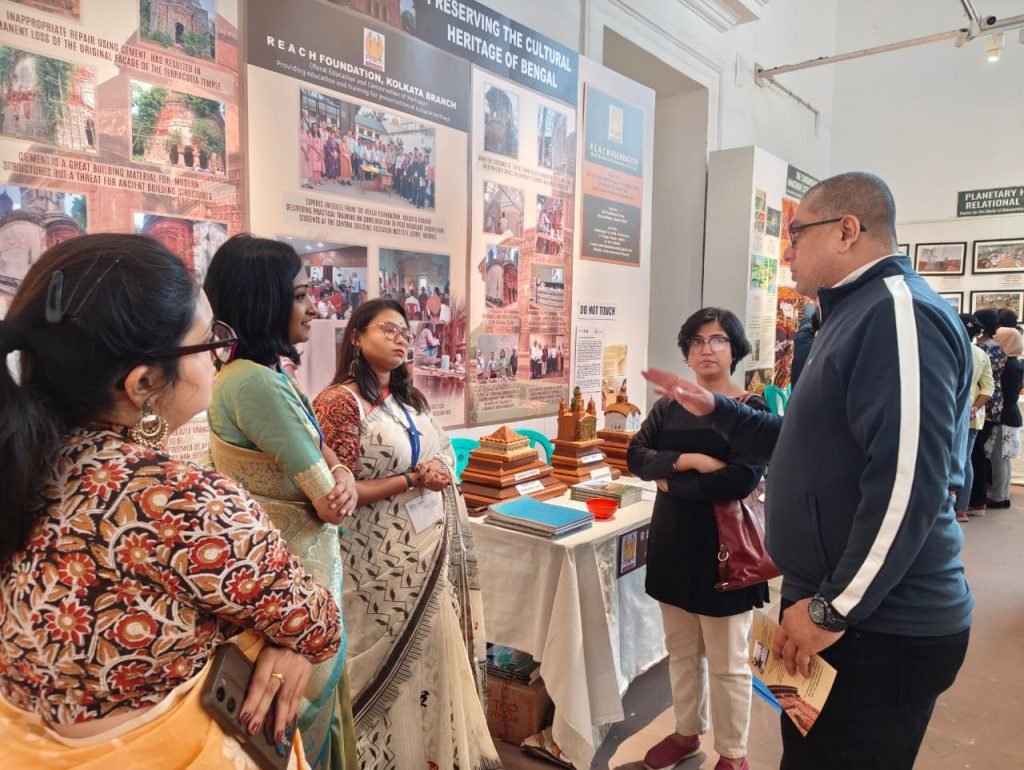
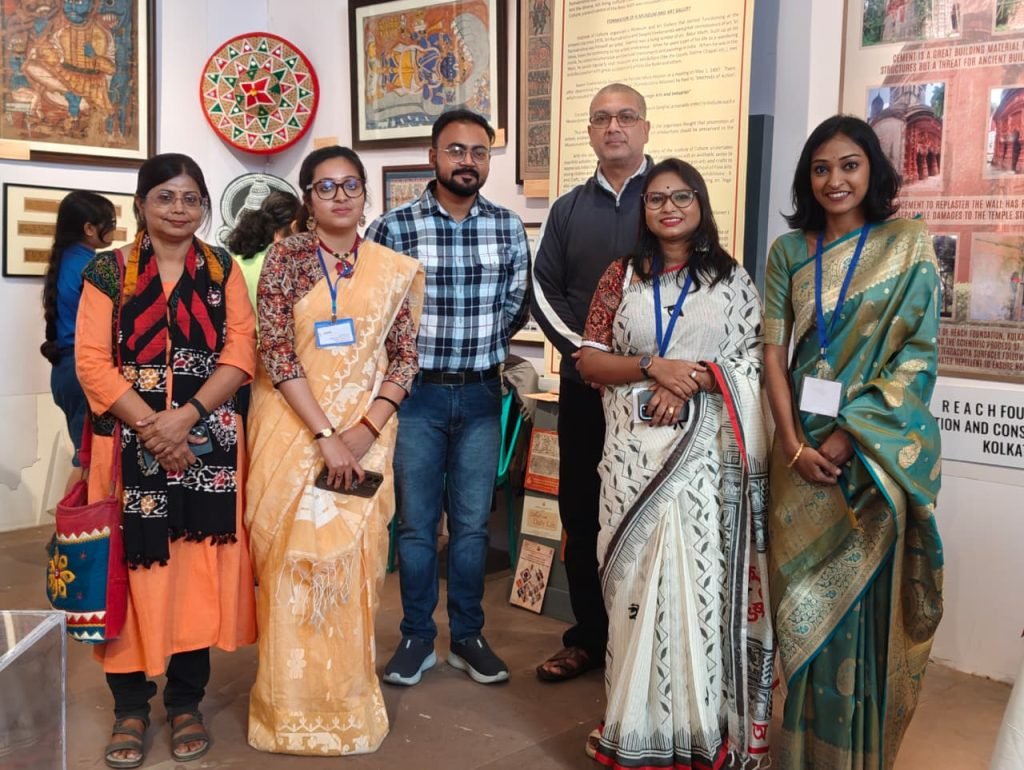

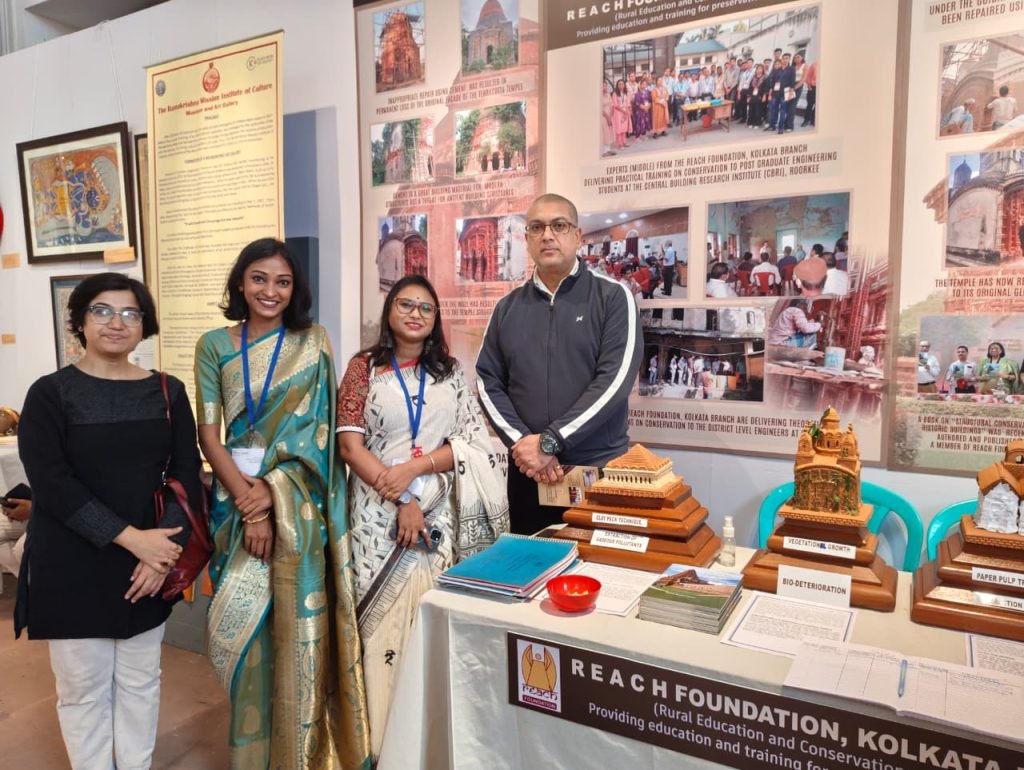
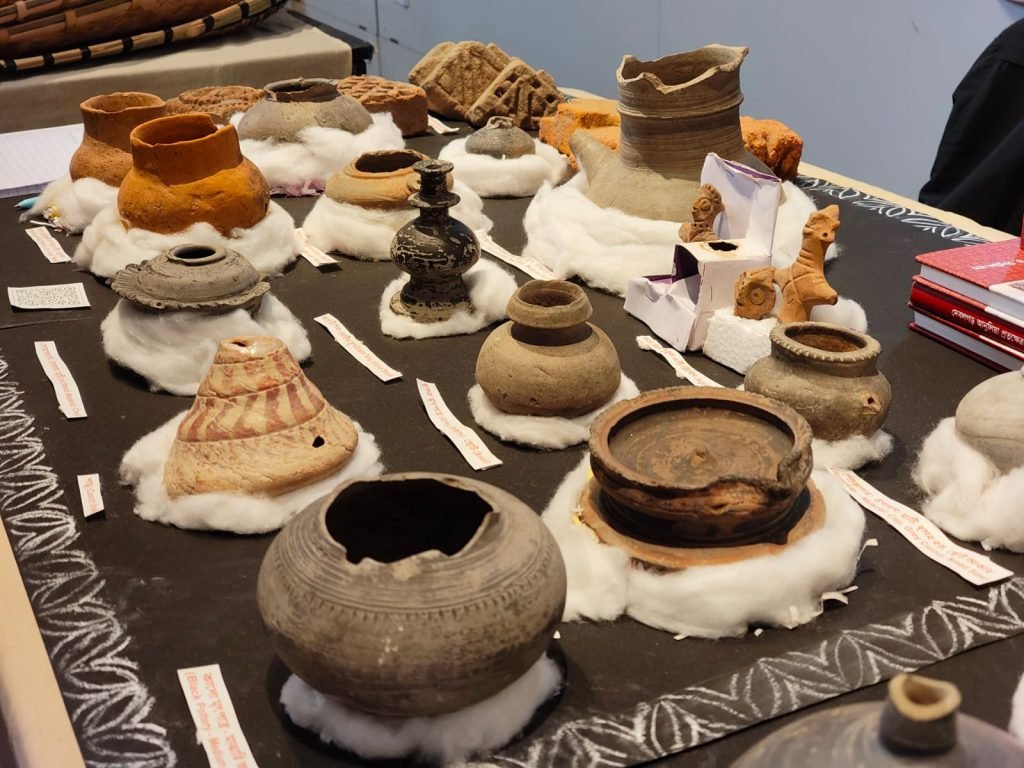
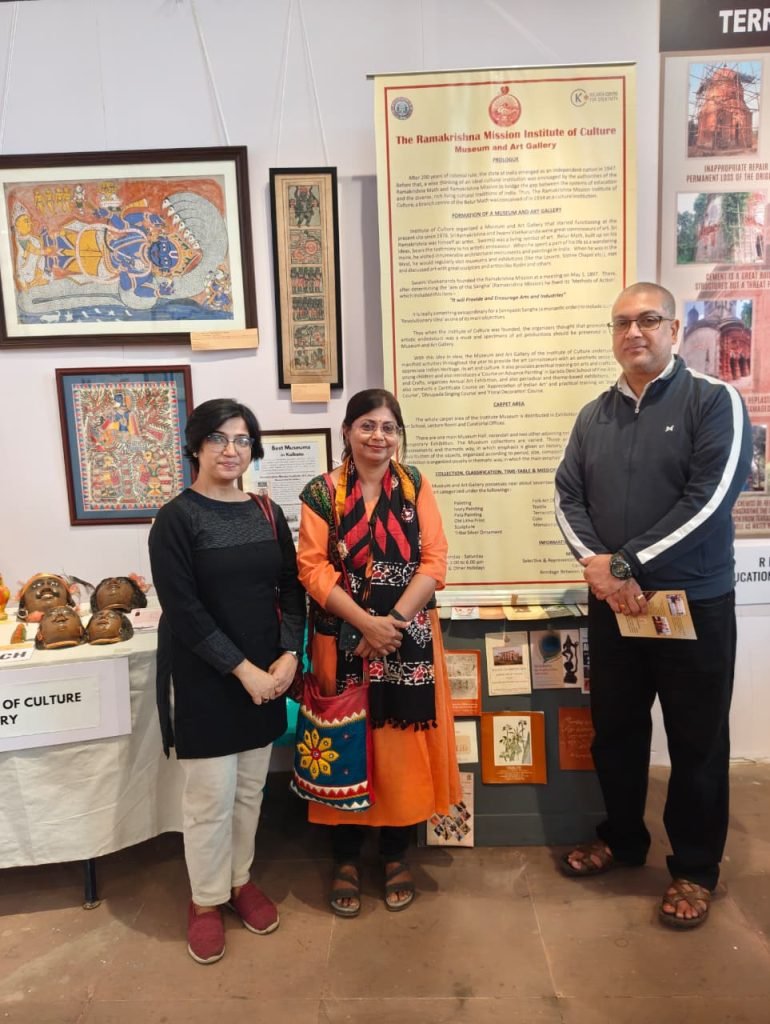


articles
CARVING CONTINUITIES: THE LIVING HERITAGE OF SOAPSTONE ARTISANS
Published
2 months agoon
November 5, 2025By
Suprabho Roy
Soapstone carving is a remarkable craft whose origins stretch back to some of the earliest civilizations in India. Today, this artistic tradition continues among communities whose heritage and skills have been passed down for many generations.
Historical Roots
Soapstone, a metamorphic rock primarily composed of talc, has been used in the Indian subcontinent since the days of the Indus-Saraswati Civilization and the Chalcolithic period. Its historical significance is evident in ancient sites where artifacts such as seals, beads, statues, and small figurines have been found. Key archaeological discoveries, like steatite ringstones from the Shunga-Maurya period and sculptures from the Gupta era, illustrate soapstone’s profound role throughout history. The artistry of temple construction, as seen in Khajuraho, Jabalpur, and Udaipur, is just one facet of the stone’s legacy, with temple artisans employing techniques and tools that are still in use by contemporary soapstone carvers.
Community and Continuity
Carving skills within artisan communities—particularly the Silawat and Vishwakarma—are shared orally and inherited over generations, often spanning four to five generations. Despite the richness of these traditions, written documentation remains scattered and incomplete, making oral testimonies vital in preserving the craft’s continuity. Migration patterns have also contributed to the dispersion and evolution of carving techniques among artisans.
Diversity of Soapstone Craft
The types of sculptures crafted by soapstone artisans are diverse, shaped by regional demands and socio-economic conditions. These range from modern decorative pieces to ritualistic art:
– In Jabalpur (Madhya Pradesh), artisans produce devotional and decorative items such as cookware, toys, and showpieces, with motifs including Shivlings, demigods, elephants, and birds. Soapstone for these works is typically sourced from mines near Bhedaghat.
– The Jhabua-Alirajpur region is known for traditional Gaata sculptures crafted in a relief style, often created in memory of deceased males and worshipped with offerings. Local mines, as well as sources in Gujarat and Rajasthan, supply the necessary soapstone.
– Udaipur’s artisans have adapted to high tourist demand, blending traditional motifs with contemporary designs. Lord Ganesh idols, abstract human figures, and various souvenirs showcase the community’s ability to innovate while maintaining cultural resonance.
Methods and Techniques
Soapstone carving is a collaborative and systematic process :
– Artisans begin with the selection and cutting of raw soapstone using cutters.
– Shaping is performed with hammers and chisels to form the sculpture’s basic structure.
– Fine chisels refine features, while detailing is achieved with pointed tools for intricate patterns.
– Female artisans often smoothen the finished sculptures using sandpaper and water, ensuring a flawless texture.
– Final touches, such as polishing and coloring, are applied with waterproof primers, oil-based substances, or spray paints for gloss and durability.
Cultural Significance and Challenges
The living heritage of soapstone carving continues to hold deep cultural value, maintaining links between the artisans of central and western India since the Bronze Age. Knowledge is primarily transmitted orally, but today faces threats from the rise of mechanization and waning interest among younger generations. Seasonal changes in tourism and market access impact sales, though affordable raw material provides some relief.
The Way Forward
There is an urgent need to recognize, support, and safeguard soapstone artisans to preserve this craft for future generations. Without such efforts, a vital aspect of India’s creative and spiritual history risks fading away. By understanding and promoting the work of these artisans, society can ensure the survival of this unique and profound tradition.
articles
CONSTRUCTING GENDER IDENTITIES IN DEATH : RETHINKING MORTUARY ARCHAEOLOGY THROUGH THE EVIDENCE OF SINAULI
Published
2 months agoon
October 30, 2025By
Suprabho Roy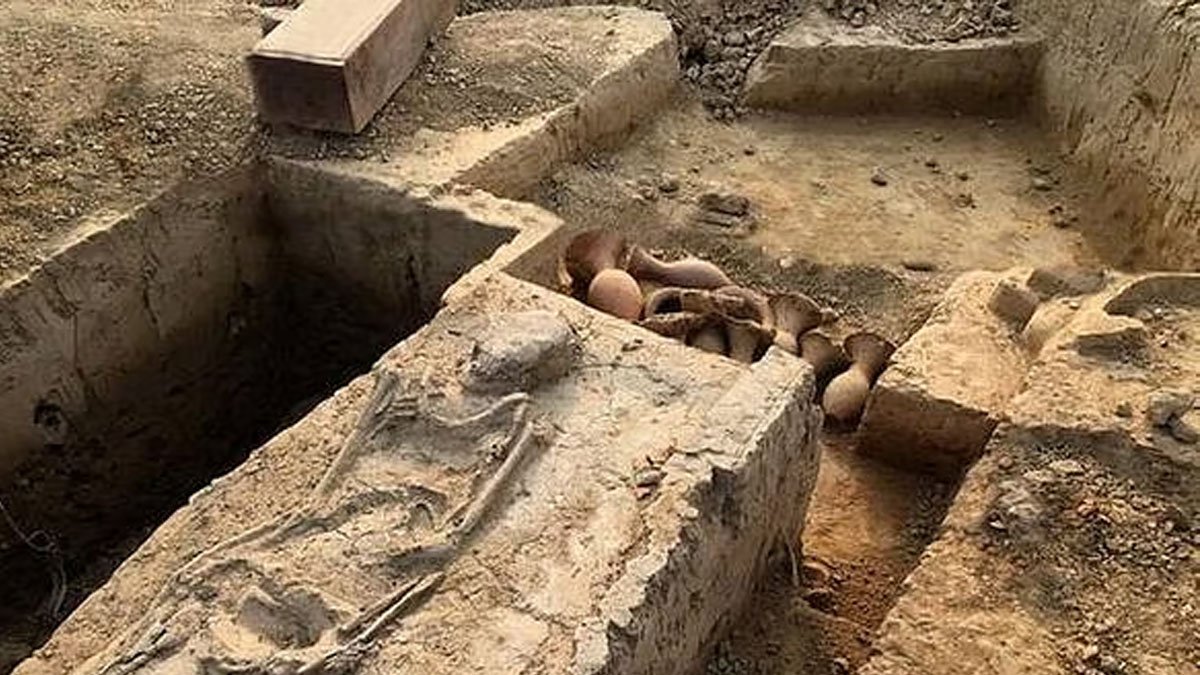
The archaeological site at Sinauli in Uttar Pradesh has provided significant insight into ancient burial practices, gender identities, and social hierarchy in South Asia. The evidence uncovered at Sinauli challenges long-held assumptions and offers fresh perspectives on mortality, gender roles, and elite status in ancient Indian society.
Location and Historical Context
Sinauli is situated in the Baghpat district of western Uttar Pradesh, lying within the fertile Upper Ganga-Yamuna Doab region. It is associated with the Ochre Coloured Pottery (OCP) culture, which dates back to the early second millennium BCE. This site gained attention due to its unique burial practices, especially those involving women and the material assemblages found with their graves.
Overview of Excavations
The Sinauli excavations were initiated in 2005 under archaeologist D.V. Sharma, and further work was conducted in 2018 by Dr. Sanjay Manjul. In 2005, archaeologists uncovered 116 burials, typically oriented north-south, along with ochre-colored pottery. The 2018 excavations revealed even greater complexity, including wooden coffins adorned with copper sheets, rectangular boxes, antenna swords, helmets, shields, pots, and controversial wheeled vehicles—leading to a debate over whether these were chariots or carts.
Types of Burials
Sinauli yielded four primary burial types:
– Symbolic burials without skeletons.
– Primary burials with full skeletons.
– Secondary or fragmented burials.
– Multiple burials containing fragmented remains.
Gender Distinctions in Burial Practices
A significant contribution of Sinauli is its challenge to conventional views on gender and mortuary archaeology. Certain burials, notably those identified by Asko Parpola, show that elite women were sometimes interred in richly decorated coffins with martial symbols such as swords, shields, and wheeled vehicles. Coffins for women featured steatite inlay and were often covered, in contrast to men’s coffins, which generally had copper sheathing and were left uncovered. Such differentiation suggests elaborate symbolism surrounding gender and possibly ritual seclusion or heightened sacredness for women in death.
One highly debated aspect is the absence of feet in Burial-1, which might suggest less earthly mobility or represent a transformation from earthly to transcendent status.
Rethinking Weaponry and Gender
The presence of weapons, such as copper antenna swords and shields, in women’s graves at Sinauli has prompted scholars to reconsider rigid notions of gender roles. These martial objects could signal the dead’s authority—either as warriors or ritual leaders—thus broadening our understanding of gender within ancient funerary contexts. Interestingly, such elaborate martial symbolism is less prevalent in the male burials at Sinauli.
Symbolism of Coffins and Elite Status
Coffins at Sinauli, rare in South Asian archaeology, were more than mere containers; they symbolically transformed the deceased into sacred beings. Their intricate decoration reflects considerable labor, resources, and craftsmanship, indicating elite status and the possibility of gendered authority within the social hierarchy.
Conclusions and Implications
The burial evidence from Sinauli emphasizes material distinctions that reveal social stratification, hierarchy, and constructed gender roles. While the idea of women warriors remains debated, the presence of martial symbols with elite women points towards complex rituals and conceptions of social power in death. Sinauli thus stands out as a crucial site for rethinking gender identities, social class, and the symbolic aspects of funerary practices in ancient India.

Team IHAR at the AMI Festival held in the Indian Museum, Kolkata

CARVING CONTINUITIES: THE LIVING HERITAGE OF SOAPSTONE ARTISANS

CONSTRUCTING GENDER IDENTITIES IN DEATH : RETHINKING MORTUARY ARCHAEOLOGY THROUGH THE EVIDENCE OF SINAULI

Rediscovering Sutanuti: IHAR WB CHAPTER’S Second Heritage Walk

Preserving Bengal’s Intellectual Legacy: IHAR West Bengal Chapter Undertakes Detailed Survey of Uttarpara Joykrishna Mukherjee Public Library

Bharat Varsh – A Cradle of Civilzation – Panel Discussion

Bringing our Gods back home – A Conversation with Shri Vijay Kumar

Panel Discussion on Sati

Bengal’s Glorious and Diverse Heritage- Traditions and Festivals – Panel Discussion

Panel Discussion: Heritage of Firebrand Revolutionaries – Bengal The Seedbed of Revolution

Debugging the wrong historical narratives – Vedveery Arya – Exclusive podcast

The Untold History Of Ancient India – A Scientific Narration

Some new evidence in Veda Shakhas about their Epoch by Shri Mrugendra Vinod ji

West Bengal’s textbooks must reflect true heritage – Sahana Singh at webinar ‘Vision Bengal’

Bringing our Gods back home – A Conversation with Shri Vijay Kumar
Trending
-

 Events2 years ago
Events2 years agoBharat Varsh – A Cradle of Civilzation – Panel Discussion
-

 Videos3 years ago
Videos3 years agoBringing our Gods back home – A Conversation with Shri Vijay Kumar
-

 Videos11 years ago
Videos11 years agoPanel Discussion on Sati
-

 Events9 months ago
Events9 months agoBengal’s Glorious and Diverse Heritage- Traditions and Festivals – Panel Discussion
-

 Events7 months ago
Events7 months agoPanel Discussion: Heritage of Firebrand Revolutionaries – Bengal The Seedbed of Revolution

